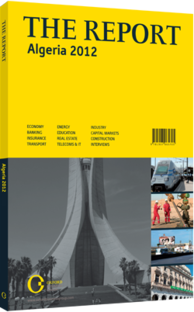Getting around: Investments in urban public transport
A key focus of spending under the government’s 2010-14 five-year development plan has been the modernisation and development of Algeria’s public transport facilities. Among other projects, the state plans to invest more than AD447bn (€4.3bn) in the construction of tramway systems for 14 cities nationwide, with the aim of emulating the success of the country’s only functioning tramway, located in Algiers.
RECENT DEVELOPMENTS: With 16.3 km of line and 28 stations, the capital city’s tramway has served more than 10m passengers since opening in May 2011. Two extensions are planned, which would bring the system to 23 km and 38 stations. Other notable projects in the works include tramways for Oran and Constantine, both of which are expected to launch operations in 2013.
To complement the Algiers tramway, the government has invested $1.2bn in the construction of the country’s first metro line, a project in the making for almost 30 years. Although initially projected to serve 200,000 people per day, the metro, which stretches across 9.5 km and has 10 stations, currently accommodates 1m-1.2m passengers per month, according to Khaled Sadji, the director of the metro system for Entreprise du Metro d’Alger (EMA), the organisation overseeing development of the city’s metro and tramways.
There are plans to add three new lines to the metro system, which is expected to boost the number of passengers to 5m each month. Two eastern extensions are set for completion in 2014, while a western extension has been delayed due to the discovery of Roman ruins during the construction of the Place des Martyrs station. However, studies were undertaken to transform the stop into a station-museum that will preserve the artifacts, and the extension is expected to be in service by 2015. In total, these initiatives will extend the metro to about 40 km and cost around AD237bn (€2.3bn), according to the current five-year plan. A metro system is also planned for Oran, with the EMA having commissioned Spanish construction and engineering group Sener to conduct a preliminary study for a metro system in that city, one that would extend 17 km and include 20 stations.
REWARDS TO BE REALISED: The construction of these new urban transport systems will likely create numerous opportunities for foreign contractors. International firms have already played an important role in the realisation of major projects such as the Algiers metro, which was constructed by Spain’s Construcciones y Auxillar de Ferrocarriles (CAF), France’s Vinci Construction and Germany’s Siemens. The completion of the Algiers tramway involved the participation of Italian construction firm Todini, the Alstom Group and local firm ETRHB. The participation of these experienced corporations not only brings benefits to the public in the form of more efficient transportation, but also contributes to the future development of Algeria’s urban transport system. “Participating in these projects will enable Algerian enterprises to acquire the technical know-how to later do this work on their own,” Mourad Bourenane, the executive director of CAF, told OBG.
Looking further ahead, the development of additional urban transport systems will also create demand for other services, such as the upkeep of metro and tram systems. “Public transport modernisation efforts have focused on the introduction of new modes of transportation in several provinces, which will provide opportunities for maintenance and line extension in the future,” Hadbi Aomar, the CEO of EMA, told OBG.
SOCIAL BENEFITS: The development of urban transport will also bring several tangible benefits to Algerians. It will help ameliorate the problems and costs that are associated with congestion and parking in major cities. It will also promote a more productive workforce. “Imagine an employee who begins work at 8.00am, but because of where he lives, there is no public transport, so he is obliged to wake up at 5.00am to arrive at the office on time. After three hours of commuting, he is already tired, reducing the efficiency of your business. Therefore, it is important for the economy to invest in more efficient methods of transport,” Sadji told OBG.
You have reached the limit of premium articles you can view for free.
Choose from the options below to purchase print or digital editions of our Reports. You can also purchase a website subscription giving you unlimited access to all of our Reports online for 12 months.
If you have already purchased this Report or have a website subscription, please login to continue.

